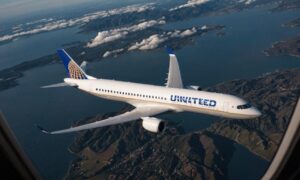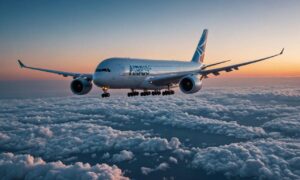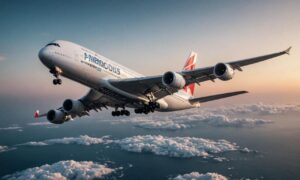When it comes to comparing two giants of the aviation industry, the Airbus A380 and the Boeing 787, enthusiasts and experts alike often find themselves in lively debates. Both aircraft represent significant milestones in commercial aviation, each offering unique features and capabilities tailored to different market demands and airline preferences.
Size and Capacity
The Airbus A380 stands as the largest passenger airliner in the world, capable of accommodating up to 853 passengers in a single-class configuration. Its sheer size and capacity make it a preferred choice for airlines operating high-density routes where demand for seats is robust.
On the other hand, the Boeing 787, while not as massive as the A380, offers a more versatile seating capacity, typically ranging from 242 to 330 passengers, depending on the variant and configuration. The 787’s moderate size makes it suitable for a wide range of routes, including long-haul and intercontinental flights.
Range and Efficiency
When it comes to range and fuel efficiency, the Boeing 787 takes the lead. With its advanced aerodynamics, lightweight composite materials, and fuel-efficient engines, the 787 boasts impressive fuel economy and long-range capabilities, making it a favorite among airlines looking to minimize operating costs and environmental impact.
While the Airbus A380 offers commendable range for its size, its four-engine configuration and heavier structure result in higher fuel consumption compared to the twin-engine design of the Boeing 787. This makes the A380 more suitable for routes with high passenger demand where efficiency may be traded for capacity.
Comfort and Passenger Experience
Both the Airbus A380 and the Boeing 787 prioritize passenger comfort and experience, albeit in different ways. The A380’s spacious cabin allows for a more relaxed and comfortable journey, with ample room for amenities such as onboard lounges, bars, and premium seating options.
The Boeing 787, while slightly smaller in size, offers innovative features such as larger windows with electronically dimmable shades, improved cabin pressurization for reduced fatigue, and enhanced humidity levels to combat the dryness often associated with air travel.
Market Demand and Future Prospects
With shifting trends in air travel and evolving passenger preferences, the market demand for large, four-engine aircraft like the Airbus A380 has dwindled in recent years. Airlines are increasingly opting for smaller, more fuel-efficient aircraft such as the Boeing 787, which offer greater flexibility and cost savings.
Boeing’s emphasis on technological innovation and fuel efficiency has positioned the 787 as a frontrunner in the long-haul market, with airlines across the globe integrating it into their fleets to meet growing demand for international travel.
In the dynamic landscape of commercial aviation, the Airbus A380 and the Boeing 787 represent two distinct approaches to meeting the demands of modern air travel. While the A380 excels in capacity and comfort, the 787 shines in efficiency and versatility. Ultimately, the choice between the two depends on the specific needs and priorities of airlines and passengers alike.
Environmental Impact
One crucial aspect that distinguishes between the Airbus A380 and the Boeing 787 is their environmental impact. While both aircraft strive to improve fuel efficiency, the Boeing 787’s twin-engine design inherently contributes to lower emissions compared to the A380’s quad-engine configuration.
Moreover, the 787’s use of lightweight composite materials not only enhances fuel efficiency but also reduces overall carbon footprint during the manufacturing process. As environmental concerns continue to shape aviation policies and consumer preferences, airlines are increasingly considering the environmental impact of their fleets, giving the Boeing 787 an edge in sustainability.
Operational Flexibility
Another aspect to consider is the operational flexibility offered by each aircraft. The Boeing 787’s moderate size and fuel efficiency make it well-suited for a variety of routes, including long-haul flights to secondary airports with shorter runways. This flexibility allows airlines to expand their networks and explore new markets without significant infrastructure investments.
On the contrary, the Airbus A380’s size and capacity may limit its operational flexibility, restricting its deployment to major hubs with adequate infrastructure to accommodate its massive frame. While ideal for high-demand routes between major cities, the A380 may face challenges in serving niche markets or adapting to fluctuating passenger demand.
Frequently Asked Questions
| Question | Answer |
|---|---|
| Which aircraft is more fuel-efficient? | The Boeing 787 is generally more fuel-efficient due to its twin-engine design and lightweight materials. |
| Can the Airbus A380 land at all airports? | No, the Airbus A380 requires specific infrastructure and runway lengths, limiting its accessibility to certain airports. |
| Are there any notable safety features unique to the Boeing 787? | The Boeing 787 features advanced composite materials that enhance structural integrity and safety. |






